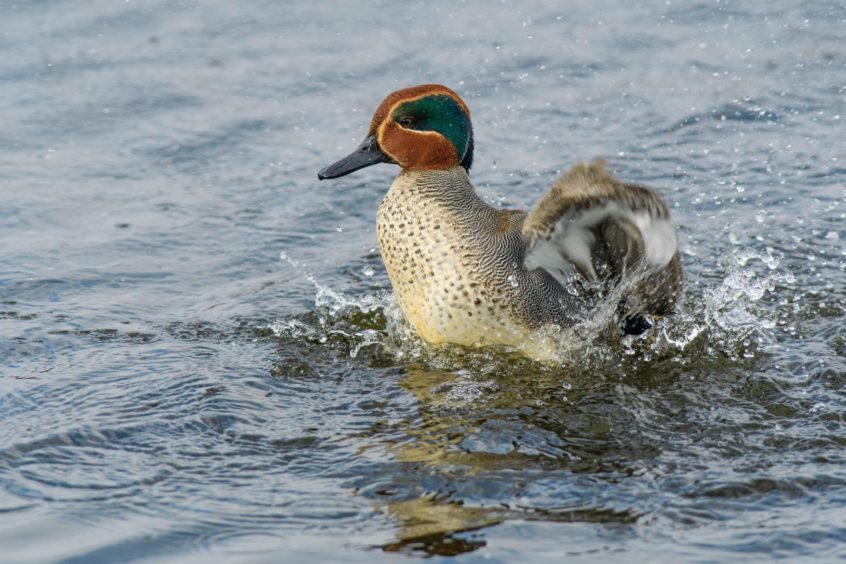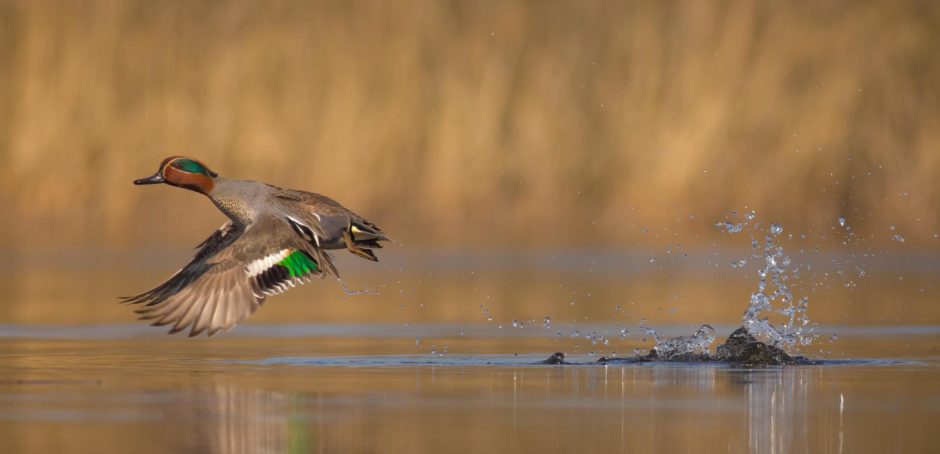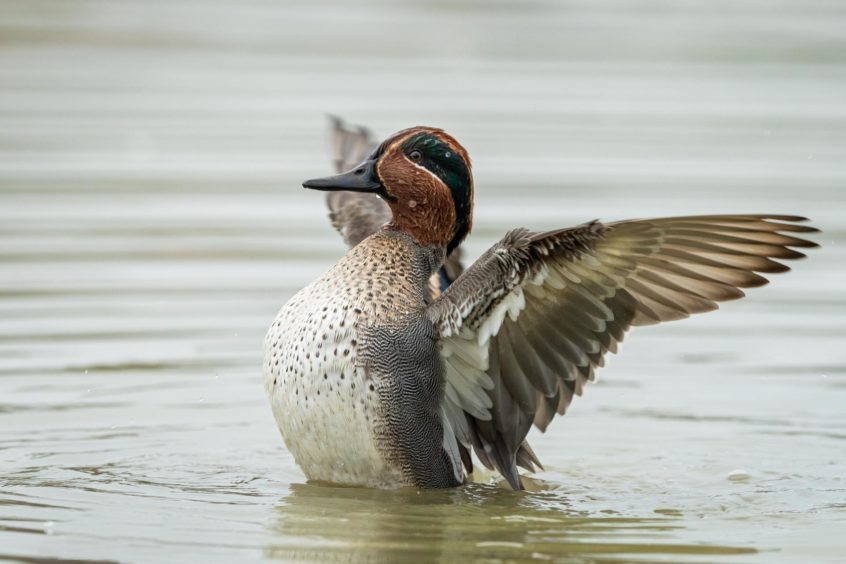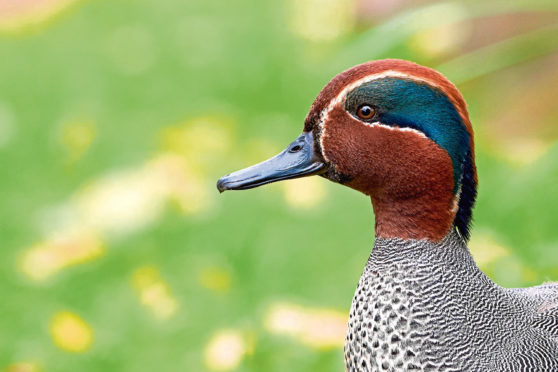Small, dainty and always bustling about, it is hard to think of a more energetic and stunning bird than the teal. These ducks simply ooze charisma and are the very heartbeat of my local river during winter.
Small, dainty and always bustling about, it is hard to think of a more energetic and stunning bird than the teal. These ducks simply ooze charisma and are the very heartbeat of my local river during winter.

It is easy to become addicted to watching teal, and on frost-laden dawns and dusks I eagerly seek them out in the placid backwash pools of the river. In my new book on a Scottish river wildlife year – ‘If Rivers Could Sing’ (Tippermuir Books) – I recounted the joy of visiting the wild ponds of the river floodplain in search of teal.
I wrote: “One of my favourite winter experiences is to seek out a secluded vantage point above these rush-filled pools just prior to dusk, from where I can watch teal flying in to settle in their boggy margins to feed. As darkness descends, these wonderful little ducks can be heard whistling to each other in the night air, a soft and flute-like call, a mere whispering in the wind. It is the essence of winter on the haugh, the call so gentle and hypnotic, it is the very music of nature itself.”

Over the last few weeks, I have been setting my video trail cameras by some of these pools to gain an insight into the behaviour of these shy and secretive ducks. Teal are much more active at night than during the day, and are dabbling rather than diving ducks, up-ending in the shallow margins of pools to seek out small invertebrates, seeds and submerged aquatic plants.
Several of my videos revealed the ducks scrabbling the bottom with their webbed feet prior to up-ending, presumably to stir-up food items. They preferred to feed in groups of four or five individuals, although also sometimes as male and female pairs. One aspect I found interesting from my film clips was that the drakes outnumbered the female ducks by at least two to one. Was this just an anomaly of my local river, or do female teal hang-out in different areas in winter, or is there indeed a sex ratio disparity?

My river trail cameras also provided an insight into many other of the river’s creatures. On one evening the whiskered face of an otter nuzzled the camera lens. Another camera caught a hunting heron on several occasions, prowling the shallow margins with careful steps, the eyes focused in rapt concentration, before stabbing its long bill forward to snap-up a tiny fish.
From the videos, minnows, sticklebacks and diminutive trout seemed to be its principal prey, and rather than bigger fish, this heron was reliant on tit-bit morsels to help sustain it through the cold days of winter. The river is awash with secrets, and the more I delve, the more questions arise in my mind, such is its mystical aura and capacity to eternally surprise.
Info
Teal are widespread in Scotland, often moving to lower lying areas and estuaries in the winter. In spring and summer, some birds breed on wet flushes in the uplands.










